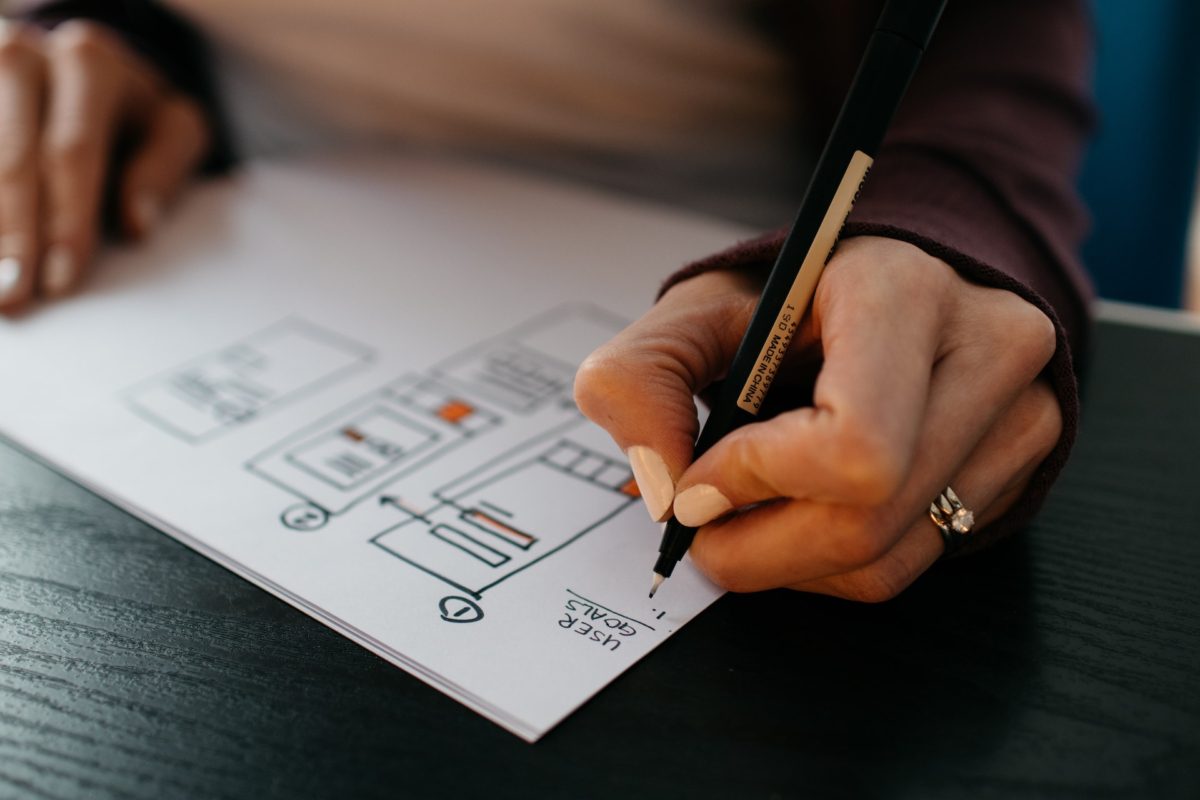This guide breaks down how to create a landing page that converts, guiding you through the process of selecting the right tools, crafting compelling content, designing with impact, and testing to ensure peak conversion rates.
User Experience and Customer Experience, UX and CX, are often confused. Some people use them interchangeably, even though they refer to two separate concepts.
What is CX and UX and what are their key differences? In this article, we will explain what sets them apart.
What is UX?
As mentioned before, the term UX refers to User Experience. It encompasses the impressions, feelings and experiences of user personas that interact with a product or service. Products can be digital or physical.
Every application, website, online course and ebook is a digital product, while things such as clothes, shoes, a single device and many others are non-digital.
UX designers work mainly with digital products, but sometimes they are also hired for non-digital projects.
UX designers study the product usability, complexity of its use, and customer satisfaction. UX design deals with topics such as visual hierarchy, information architecture, navigation, and learning ability.
Customer Experience – definition
CX, i.e. Customer Experience, covers a much broader scope than UX. It encompasses all customer interactions with the company – including its products or services.
Service related industries employ CX designers to analyze and evaluate how customers feel about a brand and improve their digital interaction.
The CX takes into account the customer’s perception of the advertising strategy, company reputation, pricing, customer service, product usability, delivery methods, and the overall sales process.
So as you can see, CX and UX are not the same, and the person’s experience using the product is only one element of the customer’s experience.

CX vs UX – experience design goals
CX and UX have one basic common goal, which is to improve the customer experience and user experience. UX and CX designers are tasked with identifying what frustrates users and customers, stops the companies from achieving their goals, and evokes negative impressions and emotions.
They create solutions to these problems to improve customer satisfaction and increase customer loyalty. Despite that, UX and CX serve different purposes.
User Experience – goals
UX focuses primarily on helping users to perform all digital activities successfully and with satisfaction. It aims to make all the interactions accessible and easy for every end user.
The goal is to leave the end user satisfied, because only then can they turn into customers.
Customer Experience – goals
CX designers deal with more problems than the UX ones. Their goal is to ensure the customers always have a positive experience when interacting with the brand. The idea is to offer a better customer experience and stand out from the competition, because customers are always willing to pay more for better interactions.
Good customer experience allows you to build customer loyalty, customer satisfaction, as well as promote and build your brand recognition and values.
For a better understanding of CX and UX disparities, take a moment to explore the role of wireframes in UX design by checking out “What is a wireframe?“.
UX performance indicators
Both UX and CX care about customer satisfaction. However, they do not measure it in the same way. UX and CX have different metrics to evaluate user experience and complete customer experience. Let’s start by discussing the UX performance indicators.
Conversion rate
The conversion rate allows you to assess the effectiveness of marketing and advertising activities by measuring the number of visitors to the website who perform certain actions that result in a conversion.
The types of activities depend on the specifics of the business, but usually include things such as: registration on the website, subscription to the newsletter, a purchase, placement of an order, filling out the contact form or sending a message. This is the basic indicator that can help you make the UX professional.
Time spent performing a task
Recording and analyzing the amount of time it takes users to complete a task and the number of people who succeeded in achieving the goal allows you to assess the quality of user interface and customer journeys. If users spend a lot of time and few achieve the goal, something is wrong and needs to be corrected, as the current system may be too complex.
System Usability Scale
The System Usability Scale, or SUS, is another way to assess the quality of the user interface. In this process, the customers are asked to complete a questionnaire that consists of ten points.
They rate their experience with the interface, its complexity, whether it is hard or intuitive to use and other factors important to each of the customer journey level.
The System Usability Scale (SUS) questionnaire, like the brand strategy questionnaire, is a tool that aims to gather information about a product or service.
Bounce rate
It is the opposite of conversion rate. Bounce rate allows you to check how many users leave the website without performing any actions, i.e. conversions. It is especially important for stores and sales pages.
Poor target audience selection or difficulties encountered by users may cause its increase. It is not as important on pages that are mainly used for reading content, and not for conversions.
A/B tests
A/B tests consist in preparing and showing users two versions of a website, and then evaluating the user experience on both versions.
This enables companies to choose a better version that generates more conversions. Thanks to this method, it is possible to perform the usability testing of many different versions and multiple interaction channels.

CX key metrics
As CX focuses on all interactions with the brand, the CX metrics used to measure success and overall satisfaction are slightly different. The following metrics are considered to be its core:
Net Promote Score
The NPS indicator, or Net Promote Score, is calculated on the basis of one question, namely: “How likely are you to recommend our brand/product to friends, family or colleagues?” The NPS indicator allows you to determine how many customers are passive, i.e. not willing to take action, and how many will recommend your products or services to others.
Customer Retention Rate
CRR shows how many customers the company is able to keep for a given period. It enables you to assess how many customers maintain, for example, active accounts on the website throughout the year and compare it to the number of those who delete them.
You will be able to catch the moment when more users start disabling their accounts, which will be a signal to make appropriate changes.
Customer Lifetime Value
CLV is an indicator of the value each customer brings to the company. It measures for example how much money each customer spends or the number of purchases they make. If these values are low, you can invest in additional sales campaigns to encourage customers to make more purchases.
Brand recognition and memorability
These indicators allow you to simply assess the level of brand awareness by checking whether customers easily remember the brand name.
In the case of Apple, Google or Microsoft, it is even impossible to forget them. So there are many ways to maintain their popularity.
Customer Effort Score
CES can be used to control the quality of customer service and company systems by measuring the effort that the customer had to make to achieve his goal.
Surveys that enable brand owners to assess the Customer Effort Score often include questions with a range of answers such as “very easy”, “easy”, “difficult” and “very difficult”.
CX vs UX designer – differences
The roles of UX designers and CX designers are similar, but focused on different stages and elements of product development. Here are the tasks of both specialists.

UX designer
A UX designer works closely with product development teams to ensure optimal usability. His specific tasks include conducting user research, designing mock-ups or prototypes, creating user traffic and improving it, as well as conducting tests to improve the user’s experience.
Most UX designers therefore need to know the basics of design, design tools, and have good research skills – good communication, teamwork and work organization can also come in handy.
CX designer
The CX designer deals with defining the customer needs and finding ways to meet them.
They conduct customer research, but also create and implement strategies and design CX touchpoints, develops customer journey maps, analyzes user feedback, as well as continuously improves and optimizes CX professional processes.
So a CX designer will need data gathering, research, presentation, management and communication skills in order to efficiently work in a CX team.
UX and CX – activities
The activities carried out as part of UX and CX are largely convergent, but there are also some clear differences between them.
UX activities
Activities that fall under UX work include:
● designing user experience from scratch for websites or mobile applications – it may also apply to physical products and services;
● increasing customer satisfaction – this is done by improving functionality and usability of products;
● handing over an easy and intuitive to use product;
● understanding the needs and recognizing what the future user wants;
● ensuring that the product meets the needs and is not only useful, but also more engaging and better than what the competition has to offer;
● relying on practices and expert knowledge derived from UX patterns to create the most useful and seamless experience;
● creating prototypes and specifications;
● project testing;
● designing a platform where user interacts with our business and developing the UI design, i.e. a website or digital tools available on multiple devices;
● cooperation with owners, product managers, programmers and visual designers;
CX activities
Customer experience activities are a bit more extensive. They cover similar activities as UX, but also:
● researching customer experience through the influence of all user experience focuses and physical channels or digital communications;
● the ability to differentiate a product through specific product features and functions. The customer wants to connect with their favorite brand in some way, so you need to get to know and respect them, which will allow you to discover the most important factor that sets your brand apart from the competition that will provide an advantage and appropriate personalization;
● creating the right impact on the company’s culture by encouraging employees to think about the customer;
● using relevant market research to understand emotions, expectations and what drives the customer;
● researching and mapping customer paths, i.e. how they move on the website;
● developing a high level of customer service because only a well-treated customer will trust the company and be willing to buy a product or order a service.

Is UX a part of CX?
Even though these are two different processes, they are related to each other. You can run UX activities as part of a CX strategy. For example, it is possible to combine these activities by creating a customer’s perception survey questionnaire or by designing a brick-and-mortar store layout.
UX is a targeted and specific part of broader CX efforts. CX therefore goes beyond UX activities as it concerns the brand as a whole. UX deals with a single interaction level of products and services that are a part of a brand, so good UX is the key to good CX.
How does CX and UX work together?
In both CX and UX, it is important to focus entirely on customer satisfaction when interacting with the brand and its products. Both pay attention to the stages of the customer journey. If the customer is not satisfied with the product, they will not have the right perception of the whole brand or company.
The same is true vice versa: if the customer is not satisfied with the purchasing process or marketing activities, they will not be satisfied with the product or even not buy it at all.
Remember that there are potential customers among the users of your website or application.
Understanding the relationship between CX and UX is necessary to succeed. The product itself is not everything – the consumer’s experience at every interaction level is important for the company to be profitable.
With a good relationship with the company, the customer spends more money on products and the company can earn more.
Crafting memorable digital journeys requires a careful balance of CX and UX principles. Explore how our custom website design services can elevate your online presence.

Final thoughts
The quality of the product itself is not everything. You also need to pay attention to customer feedback, their shopping experience, the level of contact with technical support and so on. For this reason, it is not only the visual appeal of the website or application and attractive advertisements that are important.
The customer needs to know how the product or service benefits them. That is why it is important to run UX and CX activities at the same time and monitor all the most important metrics to spot areas that need to be improved. UX and CX are not the same and you should not focus on just one of them.
Are you looking for UX and CX professionals? We are here to help!
If you are looking for customer experience professionals and user experience specialists to help you create an end-to-end process, then you are in the right place. At Nopio, we offer web design consulting services. You can also visit our blog to read more on topics such as website design and brand building.
See what planning a website project is all about and how having a bad website design can affect your business.






